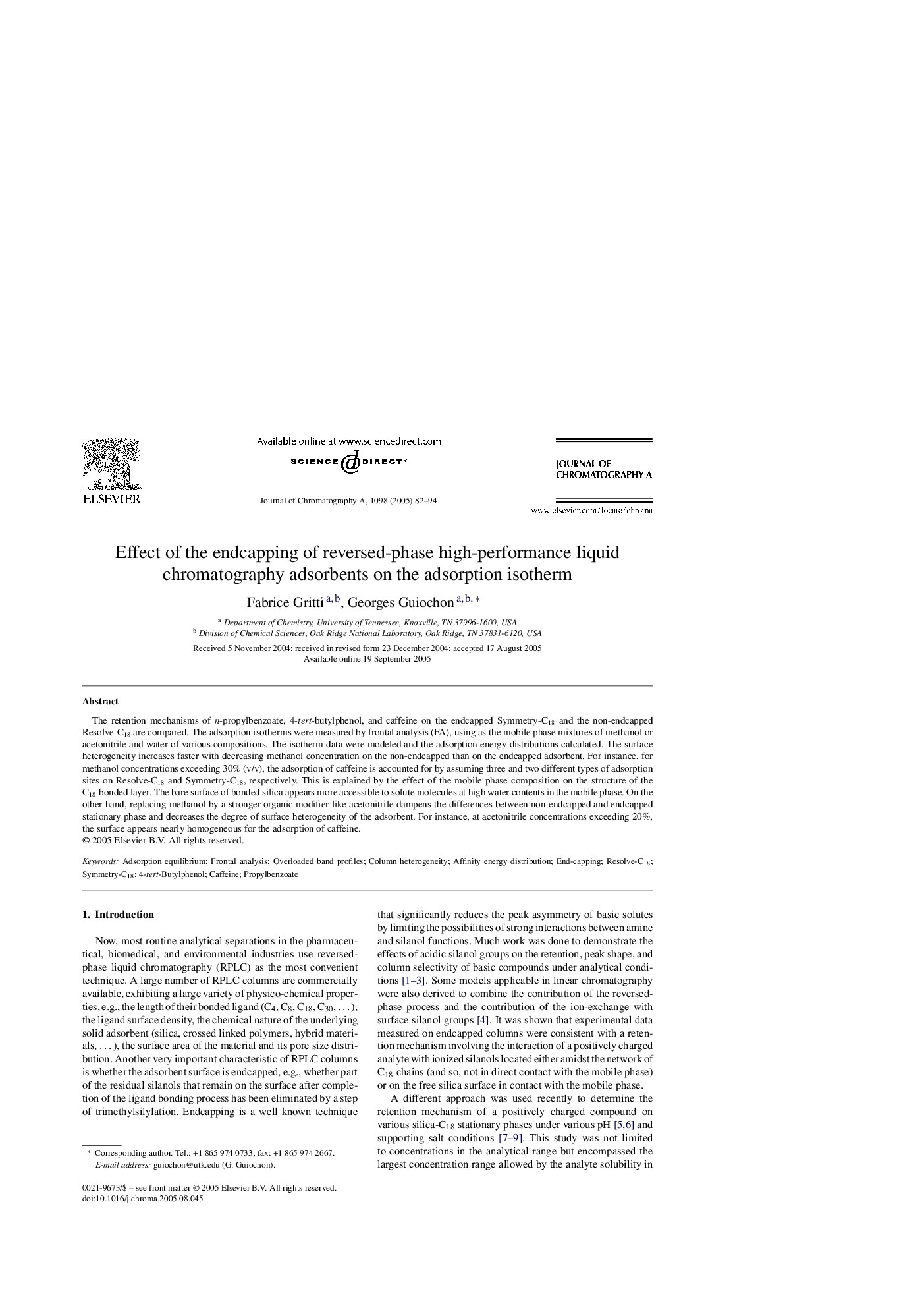| Article ID | Journal | Published Year | Pages | File Type |
|---|---|---|---|---|
| 9748490 | Journal of Chromatography A | 2005 | 13 Pages |
Abstract
The retention mechanisms of n-propylbenzoate, 4-t ert-butylphenol, and caffeine on the endcapped Symmetry-C18 and the non-endcapped Resolve-C18 are compared. The adsorption isotherms were measured by frontal analysis (FA), using as the mobile phase mixtures of methanol or acetonitrile and water of various compositions. The isotherm data were modeled and the adsorption energy distributions calculated. The surface heterogeneity increases faster with decreasing methanol concentration on the non-endcapped than on the endcapped adsorbent. For instance, for methanol concentrations exceeding 30% (v/v), the adsorption of caffeine is accounted for by assuming three and two different types of adsorption sites on Resolve-C18 and Symmetry-C18, respectively. This is explained by the effect of the mobile phase composition on the structure of the C18-bonded layer. The bare surface of bonded silica appears more accessible to solute molecules at high water contents in the mobile phase. On the other hand, replacing methanol by a stronger organic modifier like acetonitrile dampens the differences between non-endcapped and endcapped stationary phase and decreases the degree of surface heterogeneity of the adsorbent. For instance, at acetonitrile concentrations exceeding 20%, the surface appears nearly homogeneous for the adsorption of caffeine.
Keywords
Related Topics
Physical Sciences and Engineering
Chemistry
Analytical Chemistry
Authors
Fabrice Gritti, Georges Guiochon,
